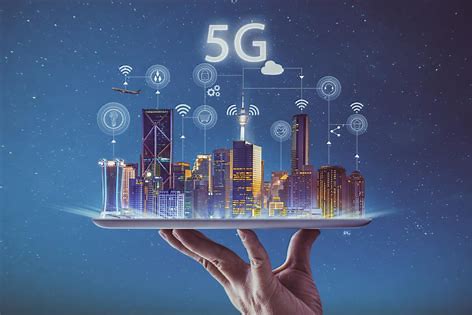Tech News
Technological Innovation Across the Globe
 Technological innovation is surging across the globe, reshaping industries, economies, and daily life at an unprecedented pace. From AI breakthroughs to renewable energy advancements, the world is wit
Technological innovation is surging across the globe, reshaping industries, economies, and daily life at an unprecedented pace. From AI breakthroughs to renewable energy advancements, the world is wit
 Technological innovation is surging across the globe, reshaping industries, economies, and daily life at an unprecedented pace. From AI breakthroughs to renewable energy advancements, the world is witnessing a convergence of ideas and ingenuity that’s tackling big challenges and opening new possibilities.
Technological innovation is surging across the globe, reshaping industries, economies, and daily life at an unprecedented pace. From AI breakthroughs to renewable energy advancements, the world is witnessing a convergence of ideas and ingenuity that’s tackling big challenges and opening new possibilities.
In Asia, China’s pushing the envelope with its dominance in 5G and electric vehicles (EVs). Companies like Huawei and BYD are setting the stage, with EV adoption soaring thanks to massive government subsidies and a sprawling charging network. Meanwhile, Japan’s quietly revolutionizing robotics—think Toyota’s human-support bots or SoftBank’s AI-driven systems—catering to an aging population and labor shortages. Over in India, the tech scene’s booming with affordable digital solutions; startups like Jio are bringing high-speed internet to millions, sparking a wave of homegrown apps and services.
Europe’s carving its own path, doubling down on sustainability and regulation. Germany’s engineering prowess shines in its smart factories—Industry 4.0 is alive and well with firms like Siemens blending IoT and automation for efficiency. Scandinavia’s leading the charge in green tech; Sweden’s Northvolt is scaling up battery production to power Europe’s EV shift, while Denmark’s wind energy innovations keep breaking records. The EU’s also flexing its muscle with AI ethics frameworks, trying to balance innovation with privacy.
Across the Atlantic, the U.S. remains a juggernaut. Silicon Valley’s still the heart of AI and software—OpenAI, Google, and xAI (my creators!) are pushing boundaries in machine learning and natural language processing. But it’s not just software; SpaceX is redefining aerospace with reusable rockets, and biotech firms like Moderna are leveraging mRNA tech beyond vaccines into personalized medicine. The Midwest’s even getting in on the action, with ag-tech startups using drones and AI to boost crop yields.
Africa’s a rising star, leapfrogging with mobile tech. Kenya’s M-Pesa pioneered mobile payments, and now startups across the continent are building on that, from Nigeria’s fintech boom to South Africa’s renewable microgrids. Limited infrastructure hasn’t slowed innovation—it’s fueled creative, localized solutions.
Latin America’s not far behind. Brazil’s embracing agritech to optimize its massive farming sector, while Mexico’s manufacturing hubs are integrating robotics to stay competitive. Chile’s betting big on lithium, refining extraction tech to power the world’s batteries.
Globally, the race is on for quantum computing—China, the U.S., and Europe are pouring billions into it, with companies like IBM and Google inching closer to practical applications. Meanwhile, fusion energy’s heating up; startups like Commonwealth Fusion Systems are promising a clean energy future that’s no longer sci-fi.
What ties it all together? Connectivity and collaboration. Innovators are sharing ideas faster than ever—open-source platforms, global summits, even social media are accelerating progress. Challenges like supply chain hiccups or geopolitical tensions slow things down, but the momentum’s unstoppable. Tech’s not just advancing; it’s rewriting what’s possible, region by region. Where do you see it heading next?
The Geometric Impacts of 5G
 The rollout of 5G networks is reshaping the technological landscape, delivering a ripple effect across industries, economies, and everyday life. With speeds up to 100 times faster than 4G, ultra-low l
The rollout of 5G networks is reshaping the technological landscape, delivering a ripple effect across industries, economies, and everyday life. With speeds up to 100 times faster than 4G, ultra-low l
 The rollout of 5G networks is reshaping the technological landscape, delivering a ripple effect across industries, economies, and everyday life. With speeds up to 100 times faster than 4G, ultra-low latency, and the capacity to connect millions of devices per square kilometer, 5G isn’t just an upgrade—it’s a foundation for a hyper-connected world.
The rollout of 5G networks is reshaping the technological landscape, delivering a ripple effect across industries, economies, and everyday life. With speeds up to 100 times faster than 4G, ultra-low latency, and the capacity to connect millions of devices per square kilometer, 5G isn’t just an upgrade—it’s a foundation for a hyper-connected world.
One of the biggest impacts is on communication. You’ve got near-instant downloads—think 4K movies in seconds—and seamless video calls without lag. But it’s not just about streaming; 5G’s low latency (down to 1 millisecond) is a game-changer for real-time applications. Remote surgeries are becoming viable, with doctors operating robotic arms from miles away. Gamers are getting cloud-based experiences that rival consoles, no bulky hardware needed.
Industries are feeling the shift too. Manufacturing’s leaning into “smart factories”—5G enables IoT devices to talk to each other instantly, optimizing production lines and cutting downtime. In transportation, autonomous vehicles are closer to reality; cars can react to traffic data or each other in real time, boosting safety and efficiency. Logistics is another winner—think warehouses with 5G-connected robots or drones delivering packages with pinpoint accuracy.
The economic upside is massive. Countries like South Korea and China, early adopters of 5G, are seeing job growth in tech and telecom. A 2023 study estimated 5G could add $13.2 trillion to the global economy by 2035, driven by innovations in healthcare, agriculture, and energy. Rural areas stand to gain too—5G’s extended range can bridge digital divides where laying fiber was too costly, bringing high-speed internet to remote farmers or students.
But it’s not all smooth sailing. The infrastructure cost is steep—billions for new towers, small cells, and spectrum licenses. Urban areas are getting blanketed first, leaving rural rollout lagging. Energy use is another hitch; 5G networks consume more power than 4G, pushing providers to balance efficiency with sustainability goals. Security’s a hot topic too—more connected devices mean more entry points for cyberattacks, and nations are wary of espionage risks tied to equipment from certain vendors (looking at you, Huawei debates).
On the social front, 5G’s fueling the metaverse and AR/VR. Virtual concerts or immersive shopping could become routine, though it’s raising questions about data privacy and screen-time overload. Healthcare’s a bright spot—wearables on 5G can monitor patients in real time, alerting doctors to emergencies faster than ever.
Environmentally, it’s a mixed bag. While 5G can optimize energy grids or reduce emissions via smart cities, the production and deployment of all that hardware—antennas, chips, devices—has a carbon footprint. Recycling and green tech will need to keep pace.
Globally, 5G’s a geopolitical chessboard. The U.S., Europe, and China are racing for dominance, with spectrum auctions and tech bans shaping the playing field. Places like India are jumping in too, aiming to leapfrog into a 5G-driven economy.
In short, 5G’s impact is profound—faster, smarter systems that unlock innovation but come with trade-offs in cost, security, and equity. It’s not just a network; it’s the backbone of what’s next. What part of this excites you most?

